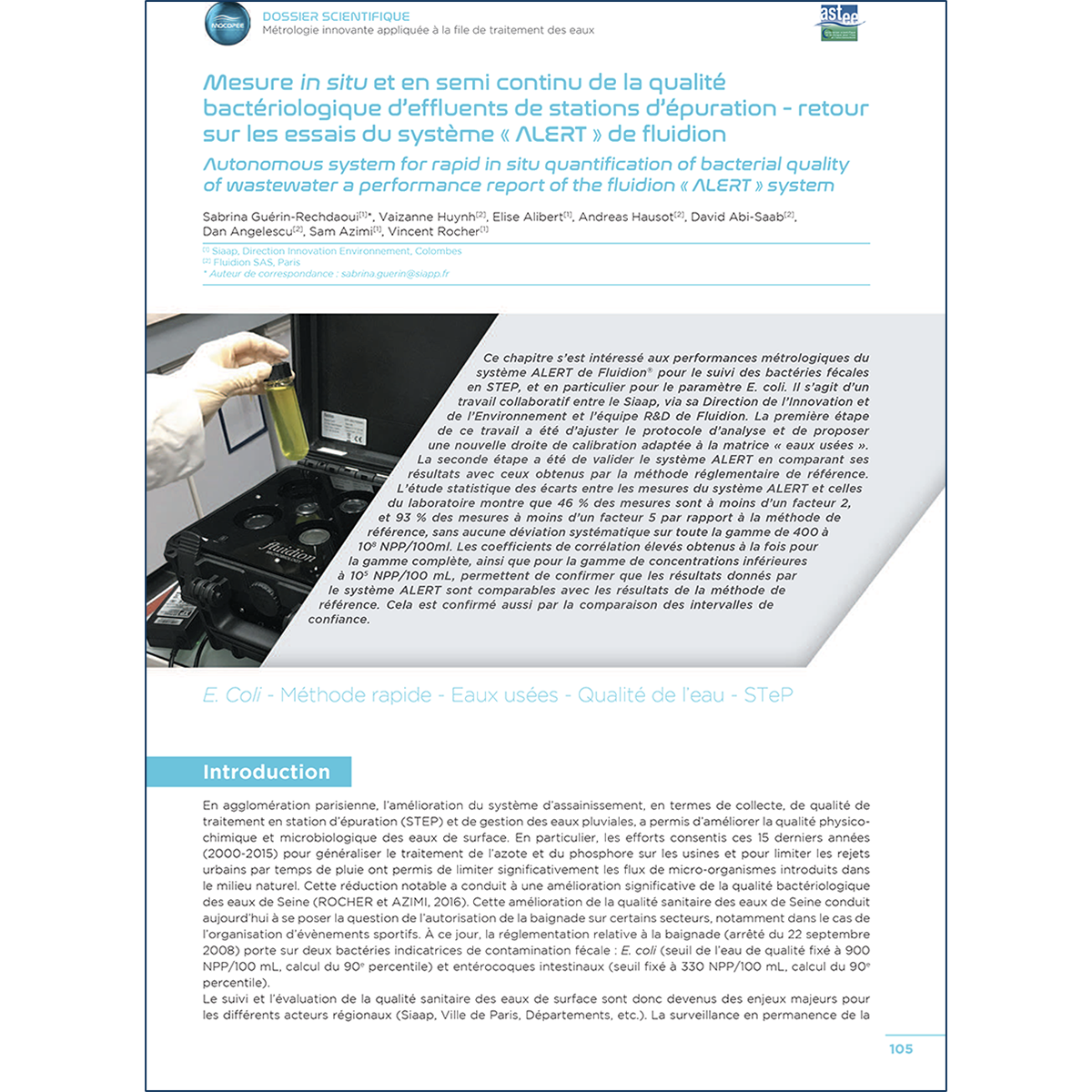
Autonomous system for rapid in-situ quantification of bacterial quality of wastewater - A performance report of the Fluidion ALERT system
ASTEE-MOCOPEE scientific report "Autonomous system for rapid in-situ quantification of bacterial quality of wastewater - A performance report of the Fluidion ALERT system", P.105-116 (2018)

ASTEE-MOCOPEE: "AUTONOMOUS SYSTEM FOR RAPID IN-SITU QUANTIFICATION OF BACTERIAL QUALITY OF WASTEWATER - A PERFORMANCE REPORT OF THE FLUIDION ALERT SYSTEM" (2018)
A scientific article by Fluidion in collaboration with the Wastewater Authority of the larger Paris SIAAP (Syndicat d'Assainissement de l'Agglomération Parisienne), focusing on the use of ALERT rapid microbiology instrumentation for wastewater measurements in all treatment processes. A new measurement protocole makes it possible to cover the full concentration range, from influent to treated efluent, with an accuracy similar to the laboratory.
Fluidion ALERT Systems calibration for E.coli tracking in wastewater treatment plants
Key points:
- The methodology presented is based on a combination of fluorescent wastewater tracking, rapid microbiological measurements with ALERT technology, and automated sampling with Fluidion's aquatic drone to provide a rapid, accurate and affordable in-situ microbiological assessment of pollution sources on river ecosystems.
- Phase 1 of the study showed that there is considerable variability in E.coli concentrations in graywater discharged from houseboats. These can vary by a factor of 10⁵. Wastewater shows high concentrations with low variability (within a factor of 10).
- Phase 2 of the study demonstrated that the methodology employed allows for the rapid identification and accurate measurement of the impact of a discrete pollution event at multiple points in the river.
- In Phase 3, a total of 182 E.coli measurements were taken over the course of one month, with an average of 6 daily measurements. The data collected showed the positive impact of rainfall events on the increase in E.coli concentrations, and also that the concentrations measured upstream and downstream followed the same trends without significant deviation.

